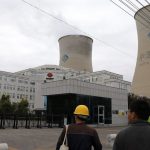
Investors often claim the U.S. government bond market is the best place to look for insights into the shifting outlook for the economy and interest rates. Right now, some think it isn’t.
In the waning days of the third quarter, yields on U.S. government bonds shot higher. That might be taken as an encouraging sign about the prospects for the economy because yields, which rise when bond prices fall, generally tend to climb with forecasts for growth and inflation.
Many analysts, though, don’t believe that yields are rising now because much has changed about the economic trajectory. Rather, they see the bond selloff as an overdue correction to an overdone rally—the product of profit-taking more than a major shift in thinking.
The reason that yields rise matters because it can influence how investors respond in other markets. All else being equal, higher yields can hurt stock prices by lifting corporate borrowing costs and reducing the value of future earnings. But investors can also welcome them if they feel rising yields reflect an improving growth outlook.
In this case, investors have registered a mixed reaction. Most are optimistic about the economy, but their views haven’t changed much since last week, when yields were lower. Stocks have been volatile, first climbing when yields started rising, then falling sharply to start this week.
Many investors have been waiting for bonds to take a hit. After reaching a pandemic high of 1.749% on March 31, the 10-year yield dropped as low as 1.173% on Aug. 2 and remained safely below 1.4% until the end of last week. But even in August, many continued to believe that yields were unnaturally low and bound to snap higher.
“I don’t think there’s really anything particularly fundamental going on,” Blake Gwinn, head of U.S. rates strategy at RBC Capital Markets, said on Aug. 2 when yields were tumbling. Some investors, he said, were buying bonds while they still could, aware that prices would likely decline at some point but confident that they wouldn’t in the very near future. Others with longstanding short positions were inclined to sell but skittish after being burned by the rally.
Mr. Gwinn had guessed that momentum would only really shift after the Federal Reserve’s Sept. 21-22 meeting. Before resetting their positions, he said, investors were almost waiting for that meeting when the Fed would likely take a “tangible turn” to tighter monetary policy.
Seven weeks later, that is more or less what happened. The Fed on Sept. 22 signaled that it would likely start scaling back its purchases of Treasurys and mortgage-backed securities as soon as November. Officials also indicated that they could raise short-term interest rates sooner and faster than they had previously expected.
Neither development was shocking to investors, and yields were little changed right after the meeting. The next day, though, investors began dumping Treasurys, bringing the 10-year yield back to 1.540% by Wednesday.
As the selling began on Sept. 23, Mark Lindbloom, a fixed-income portfolio manager at Western Asset, posited that people like him were driving it. That day, Mr. Lindbloom’s team had scaled back bets on the outperformance of longer-term Treasurys. “Our portfolio position has benefited our clients,” he said, but it was time “to take some of that off, just to hedge our bets a little bit.”
Many analysts still ascribe at least some of the recent rise in yields to an actually improving economic outlook.
Recent months have featured some disappointing economic data, including a retail-sales report in August that came in well below expectations. In September, though, the same report, covering sales in August, was much more encouraging—suggesting the economy was weathering the rise in Covid-19 cases spurred by the highly contagious Delta variant. Signs that the Delta wave might have peaked in the U.S. have also given investors hope that more workers will return to their offices, spurring additional economic gains, said Thanos Bardas, global co-head of investment grade and senior portfolio manager at Neuberger Berman.
SHARE YOUR THOUGHTS
Do you think the U.S. government bond market is the best place to look for insights into the economy and interest rates? Why or why not? Share your thoughts below.
There may be a limit to how high yields can climb from here. Many analysts in recent months have stuck to predictions that the 10-year yield could reach 1.75% or 2% by the end of the year. But their forecasts for yields beyond that point are constrained by longer-term trends.
Most important, even longer-term Treasury yields are generally dictated by expectations for short-term interest rates set by the Fed. But in recent decades, the central bank has been leaving its benchmark federal-funds rate progressively lower due to a variety of factors, possibly including a slowdown in potential economic growth, analysts said.
As it stands, the so-called neutral interest rate that neither stimulates nor slows the economy might be slightly below 2%, analysts at Cornerstone Macro estimated in a recent report. That suggests the central bank would have a hard time raising rates above that threshold, putting something of a soft cap on Treasury yields.
While investors may sometimes anticipate that the Fed might raise rates above the neutral level, “it’s very hard, mathematically, to contemplate, say, a 3% 10-year Treasury yield when the nominal neutral rate is below 2%,” they wrote.
Write to Sam Goldfarb at [email protected]
Copyright ©2021 Dow Jones & Company, Inc. All Rights Reserved. 87990cbe856818d5eddac44c7b1cdeb8








